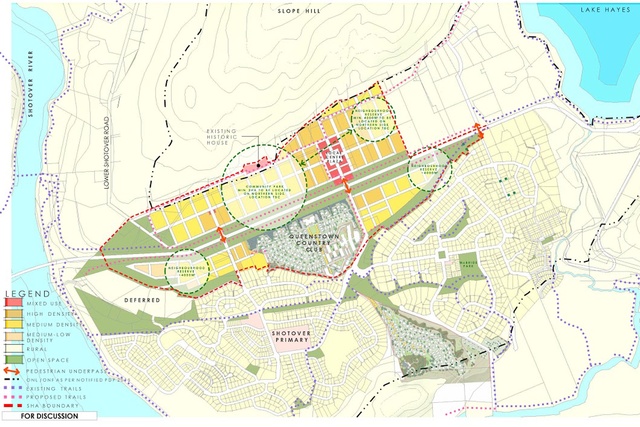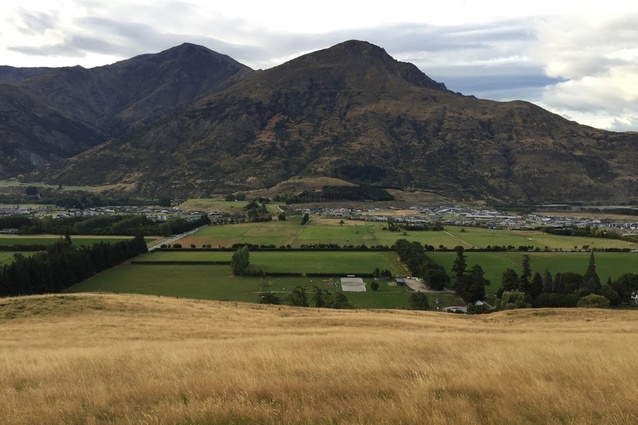Ladies Mile: More homes for Queenstown
More housing in the Queenstown Lakes District is desperately needed – there’s no argument about that. Current growth projections suggest an additional 9000-plus dwellings will be required district-wide by 2028. This rises to nearly 17,500 by 2048.
What is hotly contested in this stunning tourism hotspot is where that housing should be and what it should look like.
Urban designer and landscape architect Dave Compton-Moen of DCM Urban Design Limited worked with the district council on an indicative masterplan for a controversial special housing area at Ladies Mile, a rural area adjacent to Lake Hayes Estate and Shotover Country and considered by many to be the gateway to Queenstown. Compton-Moen says there’s potential to develop over 2000 dwellings in the 136-hectare area and his job was to look at how it could be done.

“It’s almost like creating the foundation for a new town or a big urban area, but you’re looking at it very differently to a normal subdivision because it’s purely density and affordability driven,” says Compton-Moen. “A lot of people were against the development because it was eating up farmland and potentially changing landscape values. There’s also a lot of support for it because plenty of locals don’t have houses and they need somewhere they can build.”
He continues, “I think, if Queenstown hadn’t experienced the growth it has, then I wouldn’t want to see it go ahead [at Ladies Mile]. But, because of the land pressures, it’s better to design it comprehensively now and actually create a proper new town rather than have a piecemeal, rural residential development that would lock up the land. You might lose the landscape values anyway and only get 20 lots. It’s much better if we design something properly. That’s where I’ve come to in my thinking.”
Ladies Mile is close to central Queenstown and Frankton as well as the existing residential developments. It’s one of the few undeveloped, flat areas remaining, and the council says it can be connected to major infrastructure relatively easily. It also lies on the main transport corridor into Queenstown, thus making public transport connections more viable.
The plan favours a mix of between 2220 and 2800 low, medium and high density residential units. There’s a mixed use area in the middle, designed to give a convenience retail heart to the wider area. That area is three story with retail on the ground floor and higher density around that, plus some lower density on the outskirts.

Compton-Moen says dwellings would be set back from the State Highway by a minimum of 75 metres to provide a buffer from the road. The detail of how it will actually look hasn’t been resolved. “Some of the developments in Queenstown have strong design controls like Jacks Point and Millbrook. It’s tough trying to get the balance right and to design something that’s representative of Queenstown and has high aesthetic value but, at the same time, meeting housing demand and affordability.”
He says while New Zealanders like to hold on to the quarter acre dream, the harsh reality relates to what’s affordable. “I’m working on a project in Waikanae where the density is quite high, but with significant open space provision. Originally we thought that the stand-alone house on a 600 square metre section would sell first, but we are finding it’s actually the terraced houses on smaller sections that are selling because price is the main thing [for buyers].”
A version of this article was first published on the Landscape Architecture Aotearoa website, which is published by the New Zealand Institute of Landscape Architects (NZILA).













